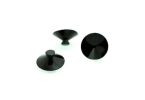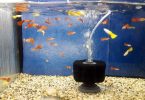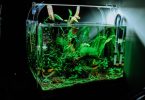Table of Contents
PLANTS FOR PONDS
Ponds are water filled areas that are usually smaller than lakes, and are either natural or physical. Whether they are natural or artificial ponds are part of the ecosystem so they bring balance to the ecology system (ecosystem).
Freshwater biologists and limnologists define ponds as bodies of water where light can penetrate to the bottom part of the body of the water.
Sometimes ponds can emanate from flooded areas, or even from a side of a river, or it could just be from an isolated or desolated depression like the prairie pothole region that bears a lot of shallow potholes or wetlands as they are usually called, or like the Vernal ponds also called ephemeral pools which provide habitat for certain kind of animals and plants;
They are seasonal and habour more species of insects or natal amphibians that are usually preys to fishes although some species of fishes like killifishes are adapted to this particular habitat.
And just like prairie potholes, the vernal ponds are also shallow waters or wetlands. Another example of an isolated or desolated depression is the kettle pothole or kettle lake.
The kettle pothole is usually in landform because it is an outwash plain created by flood waters that are draining and by glaciers that are retreating.
So the kettles are created by the form of dead ice that did not go away and are melted by increased friction.
More so, ponds could be natural in the form of saltwater, brackish, or freshwater with varieties of species of plants that live in water as well as animals that live in water.
Whether they are natural or artificial, ponds are usually shallow regardless of how big they may look on the surface.
I bet you can now identify a pond when you see one. So in this article titled “Plants for ponds”, I will be showing you the kind of plants you can put in your ponds, and the kind of plants that have the tendency to naturally grow in natural ponds.
TYPES OF PLANTS FOR PONDS
Ponds have been thoroughly described as well as define in the introductory section above, so this section will begin with an explanation of Plants for ponds or pond plants as you prefer to have it.
As the name implies plant ponds are literally plants that grow on ponds, or plants that can survive or ponds, or plants whose habitats are ponds.
What is important is that these plants share a natural bond with ponds just like spiders share a natural bond with webs except for the fact that spiders make the webs but these plants do not make the ponds.
In this section, we expect that you learn about the types of plants for ponds. The types of plants for ponds include the following:
- Water Lettuce
- Cardinal Flower
- Water Lilies
- Mosaic plant
- Taro pond plants
- Blue Iris
- Horsetail Pond Plants
- Pickerel Pond Plants
- Sweet Flag
- Creeping Jenny Pond Plants
However, not all of these plants will be explained here because there is so much more we want to share with you here.
1. WATER LETTUCE
Water Lettuce going by its name is an aquatic plant that belongs to the family of arum (Araceae). It is also known as Water cabbage, Nile cabbage, Shell flower and its botanical name is Pistia Stratiotes as it belongs to the Pistia genus, and is of the tribe of Pistieae.
Water lettuce is lime-green in colour and has leaves that look like lettuce. They are mostly reproductive, grow naturally and can be induced on a pond artificially by putting the plant on the surface of a pond and letting it float. Although water lettuce is very invasive, they can also be grown in gardens of water containers.
Being one of the world’s best productive freshwater plants lives in human sewage contaminated waters or waters contaminated with fertilizers, that is waters that possess high nutrients. The water lettuce is mostly found in the southeastern part of the United states, Florida to be specific.
The water lettuce has a poor adaptive nature hence the species is invasive in nature. In systems like reservoirs or canals that are usually altered hydrologically, the water lettuce can be weedy or like the waterleaf exhibit behavior that results in weedy overgrowth.
Water lettuce is a host to parasites like the salvinia stem-borer or samea multiplicalis. Salvinia stem-borer is a moth that lives in freshwater and is mostly found in Argentina (southern United States) and also in Australia.
The Mansonia species of mosquitoes also complete their life cycle only in the presence of water plants like the water lettuce. The water cabbage is also a source of food for turtles of the freshwater.
2. CARDINAL FLOWERS
Cardinal flowers is a plant that is said to be named after the red colour of a Roman catholic cardinal’s robe.
The cardinal flowers also known as Lobelia cardinalis produce intense red blossoms in the heat of summer when other perennials are declining.
The cardinal flower can be used for naturalizing, as well as for wildflower meadows, but you’ll also enjoy growing cardinal flowers in perennial borders.
Being a perennial herbaceous plant that is four feet tall and dwells in swamps, streambanks, water creeks, and wet places. Its leaves are oval, and broad with wide margins. It forms pink and white, and grows taller during summer.
Cardinal flower is best cultivated in deep soil rich in nutrients and early morning sun. Although perennial the plant is short lived and resides more in wet places which is why it is a pond plant.
3. WATER LILIES
Going by its name, water lily is an aquatic plant that belongs to the Nymphaeceae family; a family of fifty-eight species in three genera of the order of Nymphaeales, (that is freshwater flowering plants).
Water lilies are sources of food for fishes and wildlife; although they are habitats of tropical and temperate parts of the world, their rapid growth often causes problems in the drainage system.
Water lilies are filled with fragrance and are usually on the surface of the water on stalks that are long and attached to stems beneath the surface.
Also, the perennial is divided into the hardy group and the tropical group.
A few varieties of the water lily have been bred for ornamental use in artificial ponds and pools or gardens as the case may be.
They are beautiful plants which is why most gardeners use them. They reflect differently in the light of different spectrums of shades and colours like violet, green, white, blue, yellow, indigo, and orange. Except for crowds, the water lily leaves float on the water surface.
Water lilies appear to be magical in that in the evening they appear white and shade reddish or pink two days before they wither and be replaced by big berry looking fruits.
4. MOSAIC PLANTS
The mosaic plant also known as the nerve plant is a species of flowering plant that belongs to the family acanthaceae, and is mostly found in the rainforests of Peru, Bolivia, Northern Brazil, and Ecuador.
The nerve plant is mostly recognized by its dark green leaves and foliage, and the thick vein-like red and white lines that gives it the name nerve plant. Small buds appear after time and the stems begin to split into leaves.
Mosaic species of plant can also serve as an ornamental plant which needs a peat based substrate, or a fertile soil to grow.
Mosaic plants grow better on wet lands with little sunlight. However, should the nerve plant not be in a wetland or a moist soil, then it has to be watered daily so that it does not wither away as it faints easily but comes to life by watering it.
Aside from being a pond plant, the mosaic plant has other usefulness to gardeners in the area where it is mostly found.
For instance, the mosaic plant is used for treating headaches, muscle pains, and the leaves are also used to improve the human sight, or better put the vision of the human eyes. It is also used to prepare tea.
You can consider having a mosaic plant as its benefits are enormous.
5. TARO POND PLANTS
Taro pond plants like other pond plants are aquatic plants that grow in tropical zones. Taro pond plants are also referred to as black magic taro largely because of its appearance and its variant species.
If you will be picking plants for your ponds, make sure to have black taro on your list because its colour variety and species like the elephant ear plant can attract great attention to your pond.
If it were human, elegance would be the right word for describing its beautiful outlook wherever it is cultivated or wherever it begins to grow.
Taro pond plants can grow four feet if the climate conditions and other factors are in its favour in the area where it is grown.
Also referred to as ‘Colocasia esculenta’, it is important to share that it belongs to the family of Araceae; the species commonly used for corms, leaves, and petioles vegetables.
It is mostly found in southeast Asia and southern part of India but can be grown anywhere under the conditions enumerated above.
The perennial can be grown in environments with heavy flood cases as a result of the air spaces in its petiole that allows exchange of gas beneath the water surface.
Although cool flowing water is best for taro plants, and stagnant water should be avoided for access to dissolved oxygen, the water level still needs to be controlled to keep the plant base intact underwater.
SIGNIFICANCE OF PLANTS FOR POND
It will not be enough to know different types of plants for ponds without knowing if it is useful or not. Aside from these plants making the water beautiful, and ornamentally decorating gardens, it is important to find out how important these plants can be.
Remember that the introductory section looked at ponds and how they are needed to create balance in the ecosystem or in ecology, this section will however look at the importance of aquatic plants to water and even the eco system at large.
Pond plants are used to hinder the rapid growth of algae in wet land or ponds by using up sunlight and preventing algae from growing in line with photosynthesis.
When plants for ponds or pond plants use up the light from the sun for growth, they improve the general health and quality of the pond water by the exercise of giving back oxygen to the pond.
CLASSIFICATION OF PLANTS FOR PONDS
Apart from the types of pond plants already listed in preceding chapters, it is important to know that these plants fall under different categories which is why this section will be classifying plants for ponds.
-
FLOATING PLANTS
Having no stem or roots under the water, floating plants as the name suggests dwell on the surface of water or wet lands (you already know that water in this article refers basically to ponds).
They are usually in clusters almost like bunches in a basket, floating in a manner that makes the pond so appealing to the eye.
Floating plants also provide shade to the fishes, as well as provides newts and frogs with a habitat to rest outside the pond.
-
OXYGENATING AND DEEP WATER PLANTS
Examples of this category are: water lilies, water violets, and water hawthorns.
This class of plants for ponds are different from floating plants because they are bottom dwellers. Have stems in the depth of the water, they eliminate excess nutrients and fill it with oxygen which is very healthy for the pond, hence makes the oxygenating and deep water plants for ponds very valuable to the pond.
You should think about adding oxygenating and deep water plants to your pond water especially for seasons oxygen levels are low naturally; the summer season precisely.
-
DEEP MARGINAL PLANTS
Just like the oxygenating and deep water plants, the deep marginal plants are bottom dwellers. They can be under water in a shallow pond as they are also floating plants.
However marginal plants mostly dwell beneath the surface of pond water.
-
MARGINAL PLANTS
The marginal plants thrive more in shallow water or ponds. Although they add depth to the shape and border of the pond they are not necessarily bottom dwellers.
Marginal plants are also called emergent flowers because the flowered part of the plant always emerges or grows out of the surface of ponds, and grows beyond the surface.
-
BOG PLANTS
Like the marginal plants, bog plants are used to add border to ponds.
Although bog plants are not necessarily aquatic plants, they love wet lands and are adaptive enough to survive on ponds.
Like visitors, they are usually at the edge of the pond and are used to encourage wide life of newts and frogs on water by making the environment close to water alluring and appealing to sight.
FACTORS TO CONSIDER BEFORE OR WHILE CHOOSING PLANTS FOR PONDS
There are a few factors you should consider before choosing plants for ponds. Some of such factors include:
- Pond environment
- Size of the plant for the pond
1. POND ENVIRONMENT
Before you set out to choose a plant for your pond, you should consider the environment as well as understand the environment that best suits the plant.
For instance, if you are putting your pond under a tree, you should consider putting plants that do not need sunlight as they have the potential to thrive in such an environment.
More so, the idea of putting shading pond plants will not be necessary seeing that pond is under the shade of a tree. So technically, you will not have any need for floating plants.
More so, submerged plants will thrive where there is a limited depth in the pond water for wildlife. This protects the wildlife from entanglements that could come as a result of too much foliage.
2. SIZE OF THE PLANT FOR THE POND
Another factor you should consider is the size of the plant intended for the pond as well the size of the pond.
If the plant has the tendency of outgrowing the ponds, it will either mean that the pond is too small for the plant, or that the plant and the pond require constant pruning for maintenance.
The idea is that the plant should by all means be very suitable for the pond, and the pond too should be very accommodating for the plant.
If you are thinking of starting a pond but insists on trusting a florist or a horticulturist for a guide, that is not a bad idea, but I will advise that you consider studying about plants you intend putting in your ponds to know where they fit the most so that you are not carried away by the ornamental appearance.
The truth is that the appearance may not be the same if the environment is not right for the plant.
CONCLUSION
The best thing about this topic is that it is something practicable and so is open to experimentation.
Whether you are starting a pond for the purpose of wildlife, or for the sake of ornamental decorations, consider the intended environments and the plants too.
Plants for ponds, as well as the ponds itself balance the ecosystem and keep the ecology and the environment healthy. You should get yourself a pond and suitable plants for the pond as it keeps nearer to nature.







